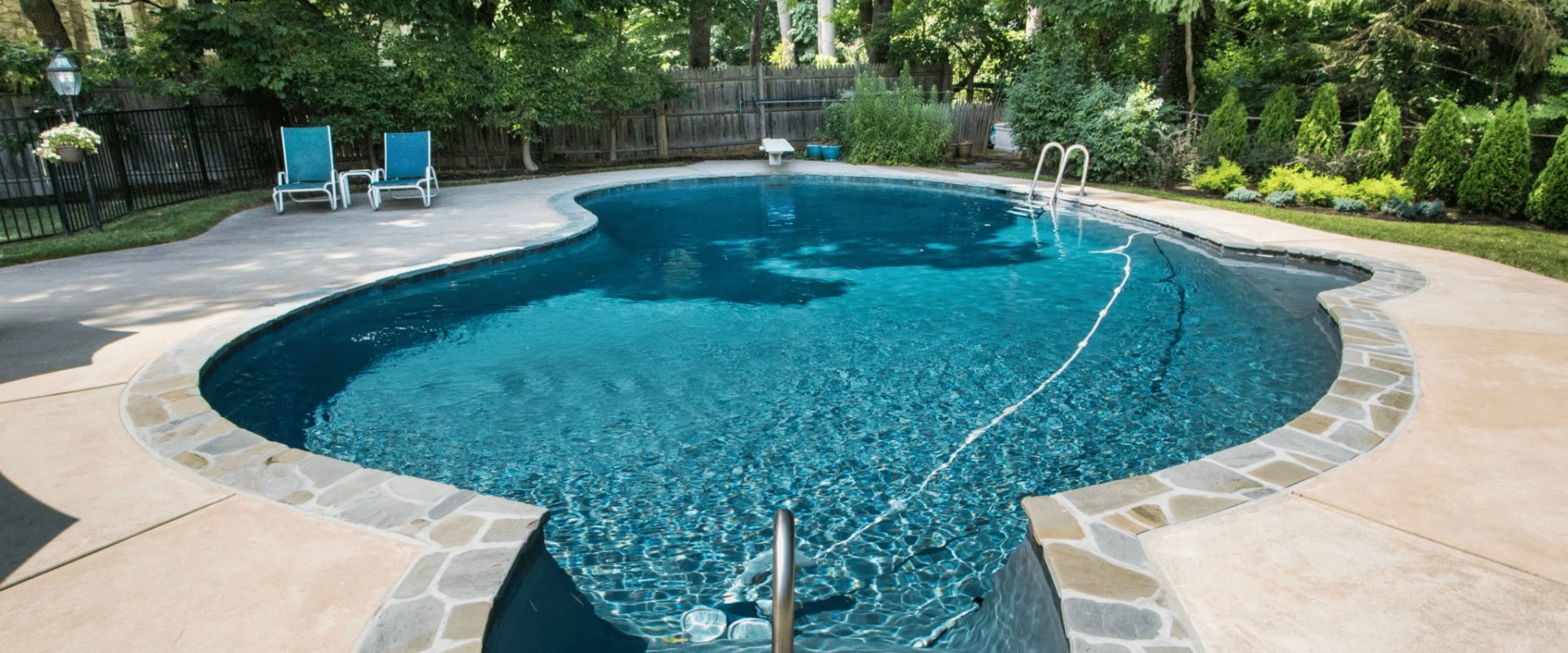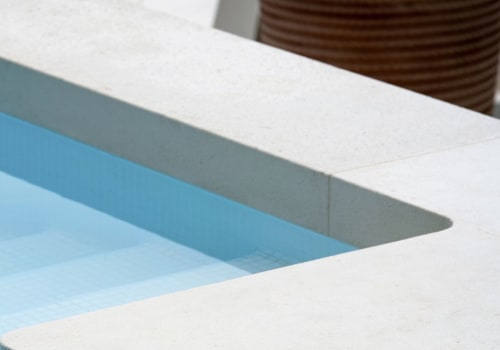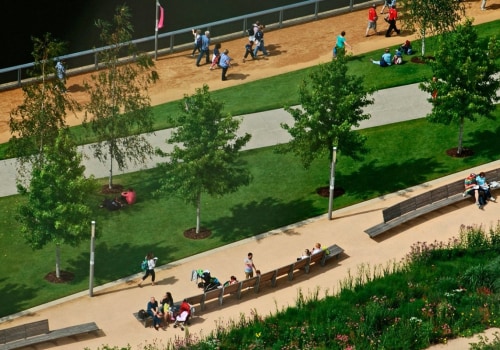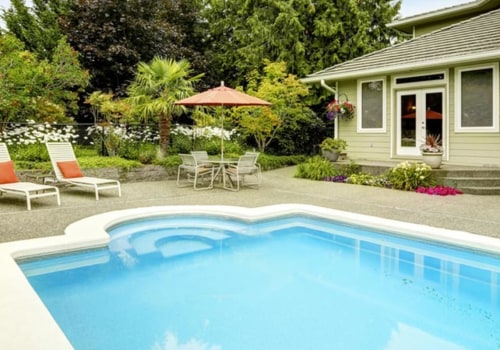Classic building stones, such as stones such as limestone and sandstone, are striking as a round above-ground pool edge, as well as in-ground pools. People have been using stone in construction for years. It is the ideal material to prevent damage to pool retaining walls by keeping moisture out. Travertine is one of the most popular materials for building luxury pool covers.
The reputation of this material for being resistant and beautiful has been known since ancient times. Today, the material is in as much demand as ever, especially among pool builders who have come to rely on the porous nature of this material and the tendency to remain cool to the touch. Commonly extracted from quarries in Turkey, Italy, Iran, Mexico and the U.S. In the U.S., Travertine generally comes in ivory, light brown, brown, and gold.
Rich and luxurious in appearance and feel, pool designers will generally choose this material for artistic environments. Another pool deck material that is often considered is slab, a common term for any type of flat natural pavement slab, such as the Oklahoma stone that was used to build this deck (pictured on the right). Extracted worldwide, the slab requires little maintenance due to its highly dense composition and typically lasts for years. Easy to install, this material is the choice of those who like a variety of shapes, sizes and colors, and who also want a one-of-a-kind creation.
Slate is a type of slab that builders have used for centuries. Heavy and durable, the board is easy to install and can be cut to different lengths and widths. Quarries in Wales, Portugal and the UK are known for their high-quality slate, but quarries in the U.S. UU.
This type of stone decking is ideal for natural environments, but also suitable for traditional spaces. Bluestone is another type of slab and is mainly mined in the U.S. Perfect for outdoor use, bluestone pavers are sturdy, non-slip and water resistant. Limestone is one of the most important building materials in the world.
Limestone, which is normally extracted from local sources, is resistant and can retain its beauty for years, regardless of the climate. Many pool designers not only build covers from this material, but also prefer to use their good looks to face the pool. Durable and attractive in a warm and earthy way, limestone can tolerate extreme weather changes and withstand continuous use. Colors include gray, blue, tan, brown, and pink, among others, and can be cut into a variety of shapes and sizes, making it a stress-free cover option for many homeowners.
Sandstone is composed of quartz grains and is usually light brown or red. Uniformly toned and exceptionally resistant sandstone is the ideal companion for swimming pools with spectacular color and texture. Pool designers like this selection because they can get the amount of material they need without worrying about an extreme color gamut. Granite is one of the hardest natural stones, so pool designers choose it when looking for a uniform look that can stand the test of time.
Made mainly of quartz, granite is usually dark in color, maintains shine and repels water. The granite deck is perfect for pool designs that have a natural design, but also a good choice for elegant environments, such as this flamed Italian granite countertop. Coral stone, also known as coral fossil stone and cornerstone, consists of coral and shell fossils, coral, sand and limestone. The luxurious feel and look of limestone makes it an excellent choice for a pool deck.
And there is a whole new class of limestones that have become more popular in northern climates, as they can withstand freezing and thawing conditions. Is your in-ground pool made of concrete? If so, then you'll need to deal with it safely. The edge of the pool is the top of the edge of the pool, which is quite necessary, but people nowadays also use it as an opportunity to give their pool a decorative accent. There is no doubt that the edge of the pool can greatly improve the appearance of your pool.
When you're inside the pool and you hold on to the top edge, you hold on to the cap. Most Homeowners Are Using Natural Stone Pools These Days. Includes limestone, sandstone, travertine, etc. Most modern finishes for natural stone crowns are stone moldings or straight edges.
Marble pavers add a touch of sophistication and luxury to your pool deck. They are extremely durable and weather resistant. Available in several bold colors and multiple sizes, they create a unique look for pool covers. On the Mohr hardness scale, granite is next to quartzite.
It means that pool cover with granite means a robust option for paving decks. Non-slip surface finishes such as flamed, collapsed or polished can make it a fantastic choice for those damp locations. You get a sober look with great utility. Many residential and commercial customers will opt for Jerusalem gray limestone for pool decks, and for good reason.
For starters, the light-colored stone stays cool to the touch, even on the hottest days of summer. As a result, pool dwellers can enjoy their time on the terrace without having to worry about burning their feet in concrete, wood or stone that is too hot. And unlike many other stone options, there is no need to seal it, so maintenance is a breeze. This distinctive material is reinforced by nature to survive a range of extreme weather conditions, salt water, pool chemicals, and heavy traffic, making it ideal for pool decks and covers.
Appearance, cost, durability, and ease of installation may be some of the first factors that come to mind for both you and your customer; however, you don't want to overlook other key factors when deciding on a pool, patio, stone, and decking material. Stylish Vinyl Lined Pools The Benefits of Building Luxury Vinyl Lined Pools Pools add luxury and value to any lifestyle, and vinyl-lined pools have overcome today's design challenges and offer a smarter construction solution. Wide joints between pavers or joints that have grass or other vegetation growing between them make the overall surface of the pool deck less slippery. Combine these comfort and safety benefits with the truly unique and beautiful appearance of Jerusalem gray limestone, and it's easy to see why so many customers want to choose this product for their outdoor pool cover needs.
Fortunately, there are several materials that are great for outdoor pool covers, but one in particular stands out. If the pool will be located in a freeze-thaw climate zone, be sure to choose a stone with lower water absorption for the pool cover. For many homeowners, a swimming pool is seen as a luxury investment suitable for relaxing and relaxing. For example, when Jerusalem gray limestone is sandblasted, it has a non-slip finish that makes it ideal for slippery areas around swimming pools.
A natural split surface comes from stones that man divides along a natural seam in the stone, imparting an organic look with a flatter surface compared to a rough split surface. However, it's important to note that for natural stone to retain its beauty around a pool, it must be treated with an approved sealant so that it can withstand weather changes, pool chemicals, and heavy use. It means that the beauty and utility of a pool is in the design, material and planning of the pool deck. Anyone who has spent time near a pool during a Northeast summer knows how uncomfortable it can be to walk barefoot on a hot pool deck, or one with a wooden surface.
The Carrera white marble in the figure above is an excellent example of the use of marble in the construction of the pool deck. Outdoor pool patios, garden pool covers, and backyard pool covers are favorite options for spending summer days in most of the United States. . .





Leave Reply